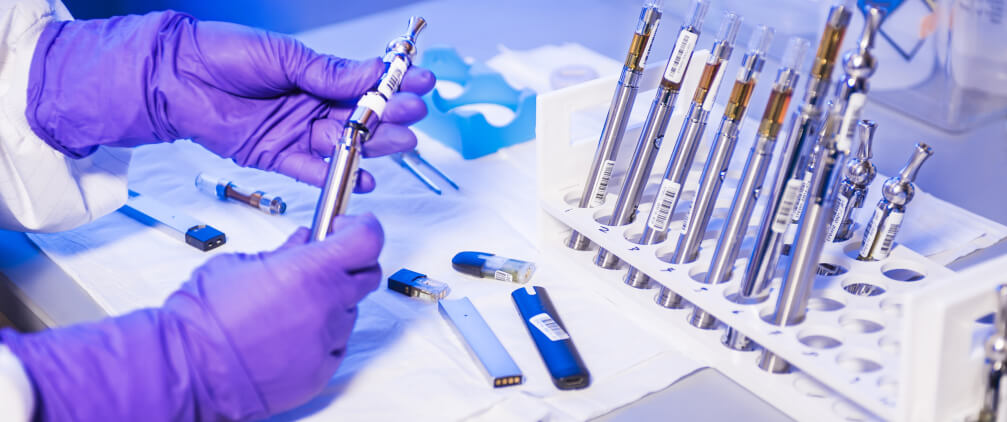
The implementation of the new standard is imminent, and the efficient detection scheme of soil aniline and benzidine compounds is fully mastered
Aniline derivatives are widely used as important raw materials and intermediates in industries and agriculture such as pharmaceuticals, rubber and dyes. At the same time, because of its obvious carcinogenic effect and strong toxicity, it is the priority control pollutant stipulated in our country. Due to the physical and chemical adsorption of soil matrix, aniline compounds are easy to accumulate in the soil after entering the environment, causing lasting harm to the environment. Monitoring the pollution of aniline compounds in soil is of great significance for environmental monitoring and pollution control.
In order to standardize the detection of aniline compounds in soil, the Ministry of Ecology and Environment has published a new standard, liquid chromatography-triple quadrupole mass spectrometry method for the determination of 13 aniline compounds and 2 benzidine compounds in soil and sediments (HJ 1210-2021), which will be officially implemented from June 1. Therefore, according to this new detection standard, our application center established a rapid and highly sensitive detection protocol for the determination of 13 aniline compounds and 2 benzidine compounds in soil and sediment by ultra-performance liquid chromatography-triple quadrupole tandem mass spectrometry.
Keywords: LC-MS/MS, environment, soil, aniline, benzidine, HJ 1210-2021
Experimental section
instruments
Table 1 Liquid chromatography tandem triple quadrupole mass spectrometer

Table 2 Detection parameters of positive ion detection compounds by liquid chromatography in tandem with triple quadrupole mass spectrometer

Reagents and standards
Reagents: Mass spectrometry formic acid (CNW), chromatographic methanol (Merck), chromatographic acetonitrile (Merck), chromatographic n-hexane (Honeywell), chromatographic acetone (CNW), chromatographic dichloromethane (CNW);
Pure water: 18.2 MΩ·cm deionized water (25℃);
Standard product: aniline mixed label reference product purchased from Shanghai Anpu.
Referring to the standard HJ 1210-2021 standard curve preparation method, 25% methanol water was configured to obtain a series of concentrations of 13 aniline and 2 benzidine compounds, and the standard curve was generated after fitting by internal standard method. The typical spectrum of the standard reference is shown in Figure 1, and the quantitative ion chromatogram of the lowest point of the standard curve is shown in Figure 2. The lowest point of the curve was injected into the sample for analysis, and the limits of quantification and detection were calculated according to S/N=10 and S/N=3. The results were shown in Table 1.
Two quality control samples with the concentration of 3-nitroaniline at 10 and 100 ng/ml and the concentration of other target substances at 5 and 50 ng/ml were prepared, and the retention time and repeatability of response were investigated.

FIG. 1 Typical spectrum of the standard reference substance (where the concentration of 3-nitroaniline is 40 ng/ml and the concentration of other target substances is 20 ng/ml)

Figure 2 Chromatographic diagram of the lowest point of the standard curve (where the concentration of 3-nitroaniline is 1 ng/ml and the concentration of other target substances is 0.5 ng/ml)
In Table 1, the detection limits and quantitation limits of each target substance were calculated based on the lowest point of the standard curve (where the concentration of 3-nitroaniline was 1 ng/ml and the concentration of other target substances was 0.5 ng/ml)

The results showed that the detection limits of 13 aniline compounds and 2 benzidine compounds were between 0.01 and 0.11ng/ml, and the limits of quantification were between 0.03 and 0.33ng/ml. The linearity in the detection range was good, and the correlation coefficients were greater than 0.999. Repeatability: the concentration of 3-nitroaniline was 10 ng/ml, and the concentration of the remaining target was 5 ng/ml. The retention time and RSD of the response were between 0.01-0.39% and 0.73%-2.86%, respectively. The concentration of 3-nitroaniline was 100 ng/ml, and the rest of the target concentration was 50 ng/ml. The retention time and the RSD value of the response were between 0 and 0.32% and between 0.33% and 3.11%, respectively.
Conclusion
According to the standard of "Determination of anilines and benzidine in Soil and Sediment by liquid chromatography-Triple quadrupole Mass Spectrometry" to be released soon, the application center has established the corresponding analysis and test method, investigated the linearity, precision and sensitivity of the method, and the results meet the test requirements. It can be used for sensitive and accurate quantitative detection of 13 anilines and 2 benzidine compounds in soil and sediment.
Equipment and consumables solutions
- EXPEC 5210 Configuration details

2. Standard products


